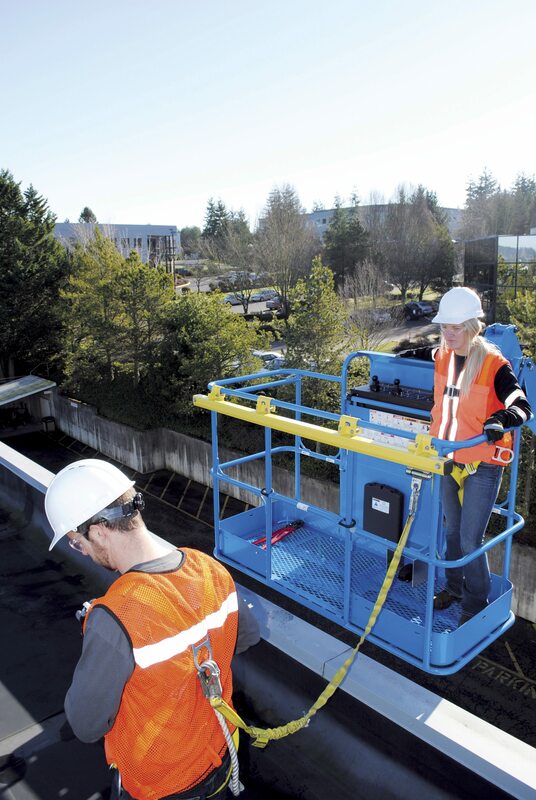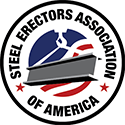|
If the adjacent structure is not equipped to provide appropriate fall protection, the Genie® boom may be used as a fall arrest anchor. (Credit: Genie) SUMMARY: It’s not uncommon that a construction worker needs to access an upper elevation using a boom lift, but does not know if in this particular situation it is safe and legal to do. There are legitimate reasons for exiting the platform at height. Sometimes exiting the platform when elevated is simply the safest way to carry out temporary work at height. Federal OSHA does not prohibit exiting a platform onto a structure, but OSHA and ANSI do require authorization by the manufacturer. In addition, some states, such as Michigan, do address it. MIOSHA, under rule R 408.43214 Fall protection Rule 3214, states: “Employees may exit the platform with the knowledge and consent of the employer.”
At the end of the day, if employees follow procedural guidelines and best practices, transferring from a boom lift to a structure could present fewer risks than utilizing a ladder to access the location. Before allowing operators or employees to exit platforms at height, it is important to conduct a thorough and specific risk assessment for the task. The risk assessment must demonstrate that the boom lift is the safest option to gain access to the intended working location and all other means of access have been explored and rejected. BEST PRACTICES
RESOURCES Be sure to familiarize yourself with the most recent ANSI A92 Standards, applicable to the type of lift you are using. IPAF: Exiting the Platform at Height Genie: Follow Special Precautions to Exit a Boom Platform at Height JLG: Info Site for ANSI A92 Safety Standard Changes This Safety Flash was contributed by Bryan McClure of Trivent Safety Consulting, Westminster, Colo., in cooperation with SEAA’s Safety Committee. It is designed to keep members informed about ongoing safety issues and to provide suggestions for reducing risk. Best practices are gathered from a variety of sources. They may be more or less stringent than individual corporate policies, and are not intended to be an official recommendation from SEAA. Always get approval and direction from your company officers on any new practice or procedure as these best practices may not work for all situations. Everyone benefits when a worker avoids injury. Submit your ideas for Safety Flash to [email protected]. Comments are closed.
|



 RSS Feed
RSS Feed
